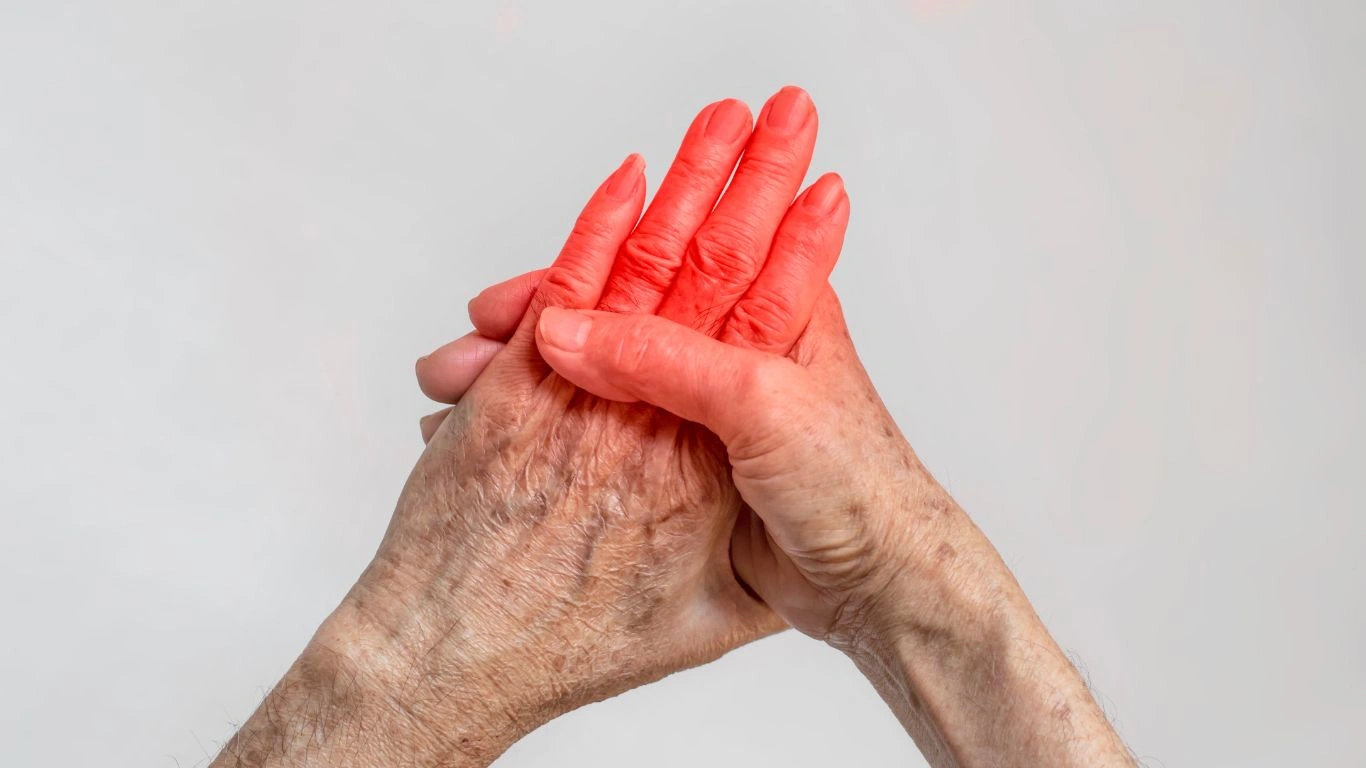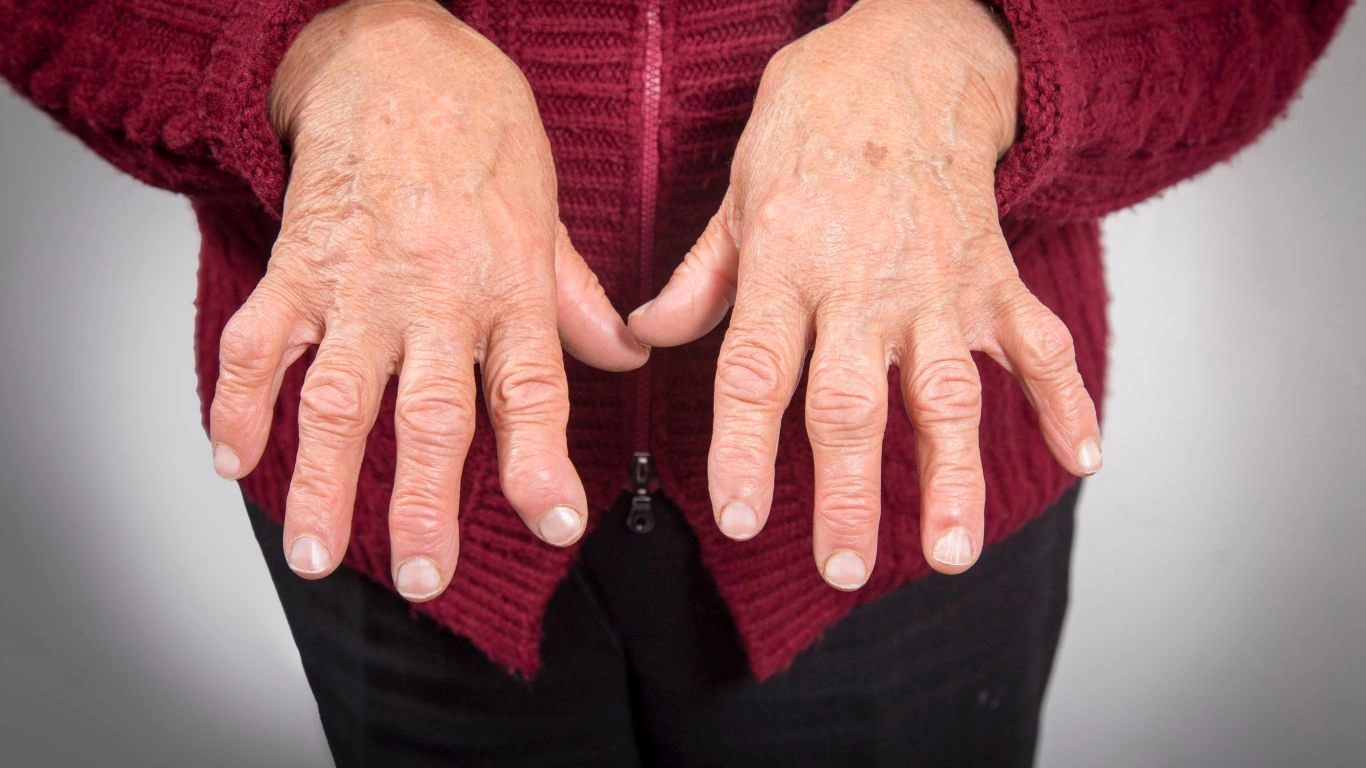Uncover the Causes of Rheumatoid Arthritis Hand Swelling: Key Triggers
Rheumatoid arthritis (RA) is more than just a condition that affects the joints—it’s a chronic autoimmune disease that can cause widespread discomfort and long-term disability. One of the most common and noticeable symptoms is hand swelling. As a Rheumatology Nurse Practitioner, I’ve had the privilege of working closely with patients dealing with RA, and I’ve seen firsthand the challenges that come with managing the pain, inflammation, and stiffness that often accompany swollen hands. For many people, understanding the causes behind hand swelling in rheumatoid arthritis is crucial to managing the disease more effectively. In this article, we’ll dive into the main reasons for hand swelling in RA, how it affects daily life, and some tips on how to manage it. Let’s start by exploring the role of inflammation in this condition.
What Causes Hand Swelling in Rheumatoid Arthritis?
At the core of rheumatoid arthritis is inflammation. In simple terms, RA is an autoimmune disorder where the body’s immune system mistakenly attacks its own tissues, particularly the synovium—the lining of the membranes that surround the joints. When this happens, the body goes into overdrive, leading to inflammation that can cause swelling, pain, and heat in the affected joints, including those in the hands.

In the case of hand swelling, the inflammation can affect various parts of the hand, including the knuckles, wrists, and fingers. This often results in visible puffiness or swelling, which can be uncomfortable and, at times, quite painful. But why does this happen? Let’s break it down.
1. Immune System Attack: The Root Cause
RA is classified as an autoimmune disease, meaning the immune system, which is supposed to protect the body from harmful invaders, instead turns on healthy cells. In RA, the immune system mistakenly attacks the synovium of the joints, including those in the hands. This results in the inflammation we see as hand swelling.
In the early stages of RA, this inflammation is often confined to the lining of the joints, but if left untreated, it can damage the cartilage and bone, leading to deformities. This can cause lasting changes in the shape of the hand joints, making it difficult to perform everyday tasks. One of the most common deformities is called ulnar deviation, where the fingers begin to shift outward toward the little finger, making the hands appear swollen and misshapen.
2. The Role of Cytokines in Hand Swelling
When the immune system starts attacking the joints, it triggers the release of various substances in the body called cytokines. These are proteins that play a significant role in the inflammatory process. In RA, cytokines such as tumor necrosis factor (TNF) and interleukins (like IL-6) increase the inflammation within the joint, leading to swelling. The more these cytokines are present, the more the swelling intensifies, which is why managing these proteins is an important part of RA treatment.
What Happens to the Joints During Swelling?
The swelling that accompanies rheumatoid arthritis isn’t just cosmetic—it’s a sign of deep-seated damage taking place within the joint. When the synovium becomes inflamed, it thickens, and this can lead to the destruction of cartilage and bone in the affected joint. Over time, this damage can become irreversible if not addressed early enough.

One of the earliest signs of hand swelling in RA is the presence of stiffness and tenderness in the joints. In the morning, many RA patients experience something called morning stiffness, where the hands feel particularly stiff and swollen after waking up. This stiffness can last anywhere from 30 minutes to several hours and is often accompanied by pain. This is a hallmark symptom that sets RA apart from other types of arthritis, like osteoarthritis, where morning stiffness usually lasts for a much shorter period.
3. Fluid Build-Up in the Joints
When the body is fighting an infection or dealing with inflammation, it often sends extra fluid to the affected area. This fluid builds up in the joints, leading to further swelling and discomfort. In RA, the synovium becomes inflamed and produces more synovial fluid, which normally acts as a lubricant. But in the case of RA, the excess fluid is part of the problem, leading to the visible swelling and the pressure that you may feel in your hands. It’s like your body is trying to defend itself, but the result is a painful and swollen joint.
How Does Hand Swelling Affect Daily Life?
As a nurse practitioner, I’ve seen how debilitating hand swelling can be for patients, especially when it interferes with daily tasks. Simple activities like buttoning a shirt, typing on a keyboard, or holding a cup of coffee become increasingly difficult as the swelling worsens. For many, it can feel like the joints have a life of their own, swelling unpredictably, and making everything from writing to cooking a challenge.
4. Difficulty with Fine Motor Skills
RA-related hand swelling often leads to a significant reduction in hand mobility. Fine motor skills, which are crucial for tasks like writing, drawing, or using utensils, become difficult as the joints become inflamed. In some cases, patients find that they need assistance with things like dressing or grooming, simply because their fingers can’t move freely enough to perform these tasks.
5. The Emotional Toll of Hand Swelling
It’s not just the physical impact of hand swelling that’s tough to deal with—it’s also the emotional toll. Many patients struggle with feelings of frustration, helplessness, and even embarrassment when their hands appear swollen. It can affect self-esteem and the willingness to engage in social situations. Over time, if left untreated, the emotional burden can become just as challenging as the physical symptoms. That’s why having a supportive healthcare team that understands the emotional aspects of RA is key to effective management.

In the next section, we’ll explore some ways to manage hand swelling in rheumatoid arthritis, but first, let’s understand the importance of early intervention in preventing long-term damage.
Managing Hand Swelling in Rheumatoid Arthritis
Now that we’ve covered what causes hand swelling in rheumatoid arthritis, let’s talk about how we can manage it. As a Rheumatology Nurse Practitioner, I’ve seen many patients successfully reduce their swelling and manage their symptoms with the right approach. The goal of treatment is not just to alleviate the swelling but also to prevent joint damage and improve overall function. Thankfully, there are several strategies that can help.

1. Medications to Control Inflammation
When it comes to treating RA, medications are often a critical first step in reducing inflammation and swelling. Nonsteroidal anti-inflammatory drugs (NSAIDs) are commonly used to relieve pain and reduce swelling. Drugs like ibuprofen or naproxen can be helpful in the short term, but they aren’t a cure for the underlying disease. For long-term relief, disease-modifying antirheumatic drugs (DMARDs) are often prescribed.
DMARDs are designed to slow the progression of RA by targeting the immune system’s abnormal response. Methotrexate is one of the most commonly used DMARDs, and I’ve seen it work wonders for many patients in managing symptoms like hand swelling. However, it’s important to note that DMARDs can take time—sometimes weeks or even months—before you start noticing significant improvements. This is why early diagnosis and intervention are so important in preventing long-term joint damage.
Another class of medications that have gained popularity in recent years are biologic DMARDs. These medications work by targeting specific components of the immune system that contribute to inflammation. Biologics like adalimumab (Humira) or etanercept (Enbrel) have helped many of my patients experience reduced swelling and improved hand function. The key with biologics is that they often need to be administered through injections or infusions, so it’s something to consider if you’re comfortable with that form of treatment.
2. Steroid Injections for Immediate Relief
For more severe flare-ups of swelling, a corticosteroid injection directly into the affected joint can provide quick and effective relief. I’ve had patients who’ve experienced significant hand swelling, and after a steroid injection, the swelling visibly decreased within hours. These injections work by rapidly reducing inflammation in the joint, which helps relieve both swelling and pain.
However, steroid injections are typically used as a temporary solution because of potential long-term side effects, such as thinning of the skin or weakening of the bones. It’s important to use them sparingly and under the guidance of a healthcare professional to avoid these complications.
Physical Therapy and Exercises to Improve Function
One thing I often stress to my patients is the importance of staying active—even with RA. While it might seem counterintuitive to exercise when your hands are swollen and painful, gentle exercises can actually help reduce swelling and improve hand function. This is where physical therapy comes into play. A physical therapist can guide you through exercises designed to keep your hands flexible and strong.

Incorporating range-of-motion exercises can prevent stiffness and maintain joint flexibility. These exercises help keep the tendons and ligaments around the swollen joints mobile, preventing them from becoming too tight or shortened. For instance, simple finger stretches and hand opening and closing movements can help maintain strength and flexibility in your hands. I’ve worked with many patients who’ve found relief from swelling and stiffness simply by sticking to a consistent, low-impact exercise routine.
In addition to range-of-motion exercises, strength training for the hands can be beneficial. Using small hand weights or resistance bands can help strengthen the muscles surrounding the joints, which in turn supports the inflamed areas and reduces the burden on the joints. This type of therapy can make a noticeable difference in how your hands feel and function, reducing the impact of daily tasks like gripping or holding items.
3. The Power of Heat and Cold Therapy
Heat and cold therapy are two non-invasive treatments I often recommend to my patients to help manage hand swelling and pain. Cold therapy, such as applying an ice pack, is fantastic for reducing inflammation, especially when there’s a flare-up of swelling. I usually suggest applying an ice pack wrapped in a towel for about 15-20 minutes to avoid skin damage. The cold helps constrict blood vessels, reducing blood flow to the affected area and thus minimizing swelling.
On the flip side, heat therapy can be incredibly soothing for stiff, achy joints. A warm bath, heated gloves, or a warm compress can help relax tense muscles and improve circulation to the swollen areas. I’ve found that alternating between heat and cold can work wonders for many patients, as it helps manage both pain and swelling while promoting flexibility and movement.
Managing Lifestyle Factors
When it comes to managing RA and hand swelling, lifestyle factors play a crucial role. I always emphasize to my patients that taking care of their overall health can significantly impact the severity of their symptoms. Things like diet, stress management, and sleep hygiene are just as important as medication in managing rheumatoid arthritis.
4. Diet and Nutrition
A well-balanced diet is essential for managing inflammation. While no one food can “cure” RA, certain foods are known to have anti-inflammatory properties that can help reduce swelling. Omega-3 fatty acids, found in foods like salmon, flaxseeds, and walnuts, are particularly effective at combating inflammation. Additionally, antioxidants from fruits and vegetables can help protect your joints and reduce the level of inflammation in your body.
At the same time, I encourage patients to be mindful of foods that can trigger inflammation. Processed foods, refined sugars, and trans fats are often linked to increased inflammation, which can exacerbate symptoms of RA. Keeping a food diary to track what you eat and how it affects your symptoms can be a helpful tool in managing hand swelling.

5. Stress Management
Stress is another factor that can worsen RA symptoms. It’s something I’ve seen in countless patients—when stress levels rise, so does inflammation in the body. Managing stress through practices like deep breathing, yoga, or meditation can help reduce the physical impact of RA. Regular relaxation techniques can calm your mind and, in turn, help reduce the intensity of hand swelling.
Overall, taking a holistic approach to managing rheumatoid arthritis is key. Combining medications with lifestyle changes, physical therapy, and stress management strategies can create a comprehensive plan to keep hand swelling and other RA symptoms under control.
Living with Rheumatoid Arthritis and Hand Swelling
As we dive into the final part of this article, it’s time to look at the long-term journey of living with rheumatoid arthritis (RA) and managing hand swelling. As a Rheumatology Nurse Practitioner, I’ve seen patients who, despite the challenges, have found ways to maintain their quality of life, reduce flare-ups, and keep their hands functional. The road can be tough, but with the right tools, support, and mindset, it’s possible to not only cope with the swelling but also thrive. So let’s explore what living with RA can look like in the long run, along with the strategies that can help keep hand swelling under control.

1. The Importance of Regular Monitoring and Adjusting Treatment
Rheumatoid arthritis is a lifelong condition, and while we can manage it well with the right treatment, it requires regular monitoring and adjustments along the way. I always remind my patients that just because they’re feeling better today doesn’t mean they should stop their treatment or check-ins with their healthcare team. RA can be unpredictable, and symptoms like hand swelling can flare up at any time. That’s why having a treatment plan that is adaptable is crucial.
Through regular visits, we can reassess how well the medications are working and make necessary changes. Sometimes, what works for a patient early on may need to be adjusted as the disease progresses. I’ve seen cases where switching to a different medication or adding a biologic has been a game-changer for patients who were struggling with persistent hand swelling.
2. Assistive Devices for Hand Function
For those who experience persistent hand swelling and pain, assistive devices can make a huge difference in maintaining independence. These devices are designed to reduce the strain on swollen joints and improve function. Simple things like adaptive grips for pens, arthritis-friendly kitchen tools, or specialized gloves designed to help reduce swelling can help make daily activities more manageable.
For patients dealing with severe hand deformities from long-term RA, surgical interventions may even be necessary to restore function. However, these are usually considered as a last resort when other treatments haven’t been effective. The key is to stay ahead of the disease progression by monitoring symptoms and using these devices before they become a necessity.
How Diet Plays a Role in RA Management
Earlier in the article, I briefly touched on diet and its impact on RA symptoms, but let’s dive a little deeper into how food can either help or hinder your efforts to manage hand swelling. I’ve had patients who were able to significantly reduce inflammation by making simple dietary changes, and it’s one of the first things I discuss during consultations.
3. Anti-Inflammatory Diet
Foods rich in antioxidants, omega-3 fatty acids, and anti-inflammatory properties can play a big role in managing RA symptoms. Incorporating foods like leafy greens, berries, fish rich in omega-3s (like salmon or sardines), and nuts can help combat inflammation. I’ve seen patients who’ve committed to an anti-inflammatory diet notice a reduction in their hand swelling and an improvement in their overall symptoms.
On the flip side, some foods can trigger inflammation and make symptoms worse. Processed foods, sugars, and excessive amounts of red meat can all contribute to higher levels of inflammation in the body. By making mindful changes to your diet, you’re not only taking control of your hand swelling but also supporting your overall health.
4. The Role of Supplements
There are also certain supplements that may help reduce inflammation and support joint health. Omega-3 fatty acids (fish oil) are a common supplement that many RA patients take, and research shows it can help reduce joint tenderness and swelling. Turmeric, with its active compound curcumin, is another supplement that has anti-inflammatory properties and can be helpful in reducing pain and swelling. Of course, it’s essential to consult with your healthcare provider before starting any new supplements to ensure they’re safe and effective for your individual case.
Emotional and Psychological Support
Living with RA and chronic hand swelling is not just physically taxing—it can take an emotional toll as well. I’ve worked with patients who have struggled with depression, anxiety, and feelings of isolation due to the challenges of managing RA. It’s essential to recognize that mental health is just as important as physical health in this journey.
5. Finding Support and Coping Mechanisms
Support from family, friends, and healthcare professionals is vital for emotional well-being. Joining support groups where you can connect with others who are dealing with similar challenges can provide a sense of community and reduce feelings of isolation. I’ve seen patients who, after connecting with others going through the same experiences, feel more empowered and less stressed about their condition.
In addition to peer support, working with a therapist or counselor can help you develop healthy coping mechanisms to deal with the emotional stress that comes with chronic illness. Cognitive behavioral therapy (CBT) is particularly helpful for RA patients, as it can assist in managing pain, stress, and the emotional challenges of living with a chronic disease.
6. Stress Reduction and Mental Health
As I mentioned before, stress can exacerbate RA symptoms, including hand swelling. Finding ways to manage stress is essential. Meditation, yoga, deep breathing exercises, and even simple relaxation techniques like listening to calming music or taking walks can help reduce stress levels. When patients focus on stress management, I’ve often seen improvements in both physical symptoms and emotional well-being.
Understanding RA Resources and Support Systems
For those navigating life with RA, it’s important to know that there are resources available to help you manage the disease effectively. From educational materials to support groups, there’s a wealth of information out there to guide you through every stage of your RA journey. Here are a few resources you might find useful:
- Health.com for general health articles and tips on managing chronic conditions.
- National Institutes of Health (NIH) for in-depth research and information on rheumatoid arthritis.
- American College of Rheumatology for expert advice and educational resources on RA.
While it can sometimes feel overwhelming, remember that with the right treatment plan, lifestyle changes, and emotional support, you can manage your rheumatoid arthritis and live a fulfilling life. Always stay proactive, stay informed, and never hesitate to reach out to your healthcare team for guidance and support.
Disclaimer
The information provided in this article is intended for general informational purposes and should not be used as a substitute for professional medical advice, diagnosis, or treatment. Always consult with your healthcare provider before making any changes to your treatment plan or lifestyle.

Tarra Nugroho is a dedicated Nurse Practitioner with a strong foundation in family and preventive care. She brings both compassion and clinical expertise to her practice, focusing on patient-centered care and health education. As a contributor to Healthusias.com, Tarra translates medical knowledge into clear, empowering articles on topics like women’s health, chronic disease management, and lifestyle medicine. Her mission is simple: help people feel seen, heard, and informed—both in the clinic and through the content she creates. When she’s not caring for patients, Tarra enjoys weekend hikes, plant-based cooking, and curling up with a good health podcast.






